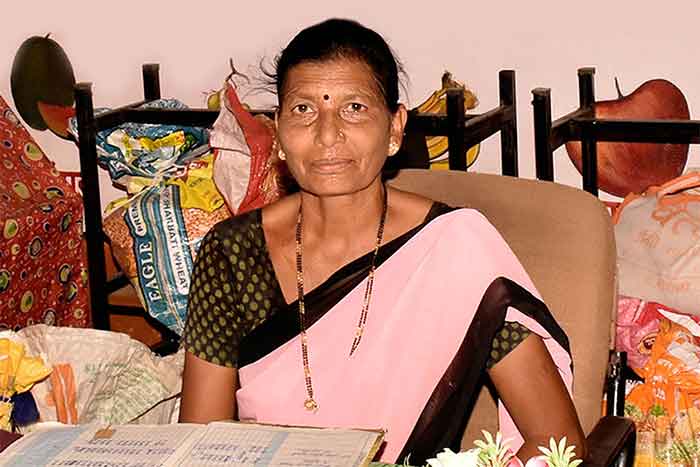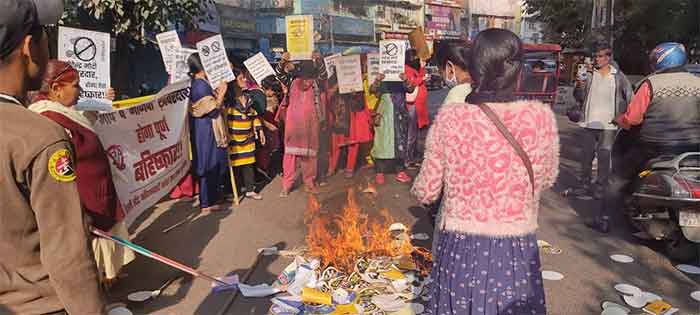During my professional engagement with rural India, I found that one of the most useful resources at the grassroots level was an Anganwadi worker. I would always begin my village exploration with a visit to an Anganwadi and would be rewarded with a finer introduction to the local community. I have always regarded Anganwadi workers as the most efficient last-mile connects. Their delivery on the ground is both devoted and empathetic.
In normal times, India’s army of Anganwadi workers is on the frontline of the country’s war against undernutrition. Today, it has joined another battle — the battle against COVID-19. This vast cohort is now at the forefront of community surveillance, detection and prevention mechanisms, going door to door, recording people’s travel history, noting symptoms, advising people on hygiene protocols and social distancing to protect themselves against the virus.
These workers form an important part of the disease surveillance and mitigation mechanism. Since they know their people well and have intimate on-the-ground experience, this legion of Anganwadi workers is extensively used by district administrations in times of crisis. Dealing with emergencies is, therefore, not alien to their cadre. Anganwadi workers are a resilient workforce and can adapt very quickly to difficult circumstances. In Wanoja village in Chandrapur district of central India, too, Anganwadi workers are leading Covid-19 work. Apart from spreading awareness about the Coronavirus and conducting related surveys, they visit houses, looking for cases of cholera and keep track of immunization, family planning, nutrition and so on. An Anganwadi worker is usually a local village woman, between 18 to 35 years of age and educated up to class X. She gets paid around Rs 4,500 per month.

An Anganwadi worker whom I have known for most of my professional life and who is still active in that role is Meera Chaudhary of Wanoja village. I remember vividly my first encounter with Meerabai. She lived in a primitive house which had a very low entrance. I had to bend almost half to get into it. Meerabai had a goat which she milked on every visit to prepare tea for us. We became regular visitors and she always welcomed us with great warmth. We would spend time discussing local affairs, the diverse occupations and even politics although she had little interest in it.
Since Meerabai was the primary interface of the village for development staff of the Government, she was familiar with the niceties to be done when entertaining visiting dignitaries. I found her a well-trained host.
Her husband Vasantrao had a hair salon in the local town. When Meerabai became an Anganwadi worker in 1986, she received a monthly compensation of Rs 125. For Meerabai, the job was purely a labour of love. Although Anganwadis were the primary units of India’s mainstream nutrition programme for women and children, Anganwadi work was considered more of a social contract than a source of stable income. Meerabai’s organizing skills and her endearment to her people proved highly resourceful to us. She would host our meetings in her house and whenever the meetings were larger, she would open the Anganwadi premises. While the Anganwadi was not part of our agenda, we got involved in it. We helped the Anganwadi with a small donation for purchasing an audio player, a few tricycles and a collection of modern toys.
Right from the beginning of her career as an Anganwadi worker, Meerabai carried an air of seriousness and was very committed to every task she undertook. This is the reason she was never allowed to retreat to the privacy of her home even when she was keen to take a holiday.
She juggled the Anganwadi job even as she saw through the education and marriages of her three daughters. She saw several juniors join and leave the Anganwadi on account of lack of adequate monetary incentives. But she couldn’t think of taking a reprieve because parents would shudder at the very thought of what the Anganwadi would be like without Meerabai.
She has grown into a versatile resource primarily because she has handled practically every grassroot role for which there was no specifically-assigned Government worker. There was a time when the block administration wanted to use Self Help Groups (SHGs) for promoting its nutrition mission for children and pregnant mothers. We already had these groups for micro-finance. Meerabai provided us a platform for using them as conduits for social and financial programmes.
How is it that when every Anganwadi gets the same monthly support from the Government, some perform well while others lag behind. One major reason is leakage at every level where the aid is sponged off. As the aid travels, only a small part reaches the actual beneficiary.
Indians have learnt to live with this so called “chalta hai (it’s ok)” attitude. But you will get a better answer when you observe a typical day in Meerabai’s work schedule. She is meticulous about hygiene and the quality of raw materials used for cooking mid-day meals for children. She pays attention to every minute detail so that the overall ambience of the Anganwadi is highly stimulating.
The children belong to a very sensitive age band (under six years), when their vital cognitive and behavioural functions are being developed. Meerabai’s deep understanding of child behaviour has made a huge difference. A child’s early years have a disproportionate impact on the rest of his/her social, mental and emotional life up to adulthood. That’s why Anganwadis are considered a cost-effective way to raise a generation of healthy, socially-adept and productive adults. It is far better than treating sick adults later.
Meerabai recalls the hardship she endured in setting up the Anganwadi and the ordeals during the family planning programme, when stiff targets had to be met for sterilisations. She recalls how “scary” it was when her inexperience landed the initial efforts in trouble, but her bosses rallied around and chipped in.
Anganwadi workers do not have any comprehensive manual on managing their role. They are taught broad principles and it is left to their raw native understanding and native wisdom to flesh out the details. An Anganwadi Worker (AWW) is entrusted with many non-Integrated Child Development Services (ICDS) tasks — such as preparing voter identity cards, conducting a census, employment or Swachh Bharat Mission (Clean India Mission) surveys and helming election booths — none of which is paid work except for election duty.
It may not be possible for the Government to provide formal salaries and other allowances to Anganwadi workers on account of the country’s experience with formal employment. But it can give frontline responders such as healthcare workers and social service providers guaranteed support and fair compensation. Many of these healthcare workers, fighting the COVID-19 on the frontline, are equipped only with commitment, courage and the burden of expectations.
Their low salaries could be augmented with bonuses based on actual improvements in the health of the mothers and children they serve. Apart from bonuses, a mechanism could be devised to ensure that people who are responsible for delivering particular goods or services will not be paid unless they produce proper documentary evidence. Modern technologies could be applied to ensure accountability in governments’ services.
One way of improving motivational levels of Anganwadi workers is through aligning their incentives with the policymakers’ objectives. Each Anganwadi worker can be individually made responsible for services at her centre, thereby avoiding the problems associated with free-ridership. Payment would be made based on overall outcomes among all the children at each centre, incentivizing each worker to allocate efforts among tasks in somewhat the same way as payments to teachers for education outcomes are based on improved test scores.
Focusing on outcomes creates incentives for workers to employ contextual knowledge about the optimal allocation of available resources. Performance pay in the healthcare sector usually targets the provision of intermediate inputs such as clinic visits or other specific services.
Anganwadis are the primary units of ICDS, the world’s largest State-promoted social programme. ICDS was launched on October 2, 1975, with about 5,000 Anganwadis to deliver high-quality healthcare, nutrition, community education and pre-school education services to vulnerable families. The centres are tasked with a range of public health responsibilities including providing supplementary nutrition, informal preschool education, nutrition and health education, immunization, health check-ups, and referral. The ICDS program is dedicated to serving all children under six and pregnant and lactating mothers
Working alongside an army of nearly three million Anganwadi workers are more than nine lakh Accredited Social Health Activists (ASHAs). The ASHA initiative was the result of the 2005 National Rural Health Mission, affiliated with the Ministry of Health and Family Welfare. A single ASHA worker looks after more than one thousand families in an administrative unit.
With about 1.4 million Anganwadis in 7,000 blocks and around 2.8 million frontline personnel, Anganwadis continue to be the backbone of India’s grassroots social services platform for women and children Yet. child and maternal mortality remain high. The desired health outcomes are not achieved partly because the services that are promised are not delivered. the real value of the programme can be realized only when the cadre has devoted workers. They are the most authentic mascots of this mission which would complete a half-century in a few years.
Moin Qazi is the author of the bestselling book, Village Diary of a Heretic Banker .He has worked in the development finance sector for almost four decades .He can be reached at [email protected]
SIGN UP FOR COUNTERCURRENTS DAILY NEWSLETTER















































